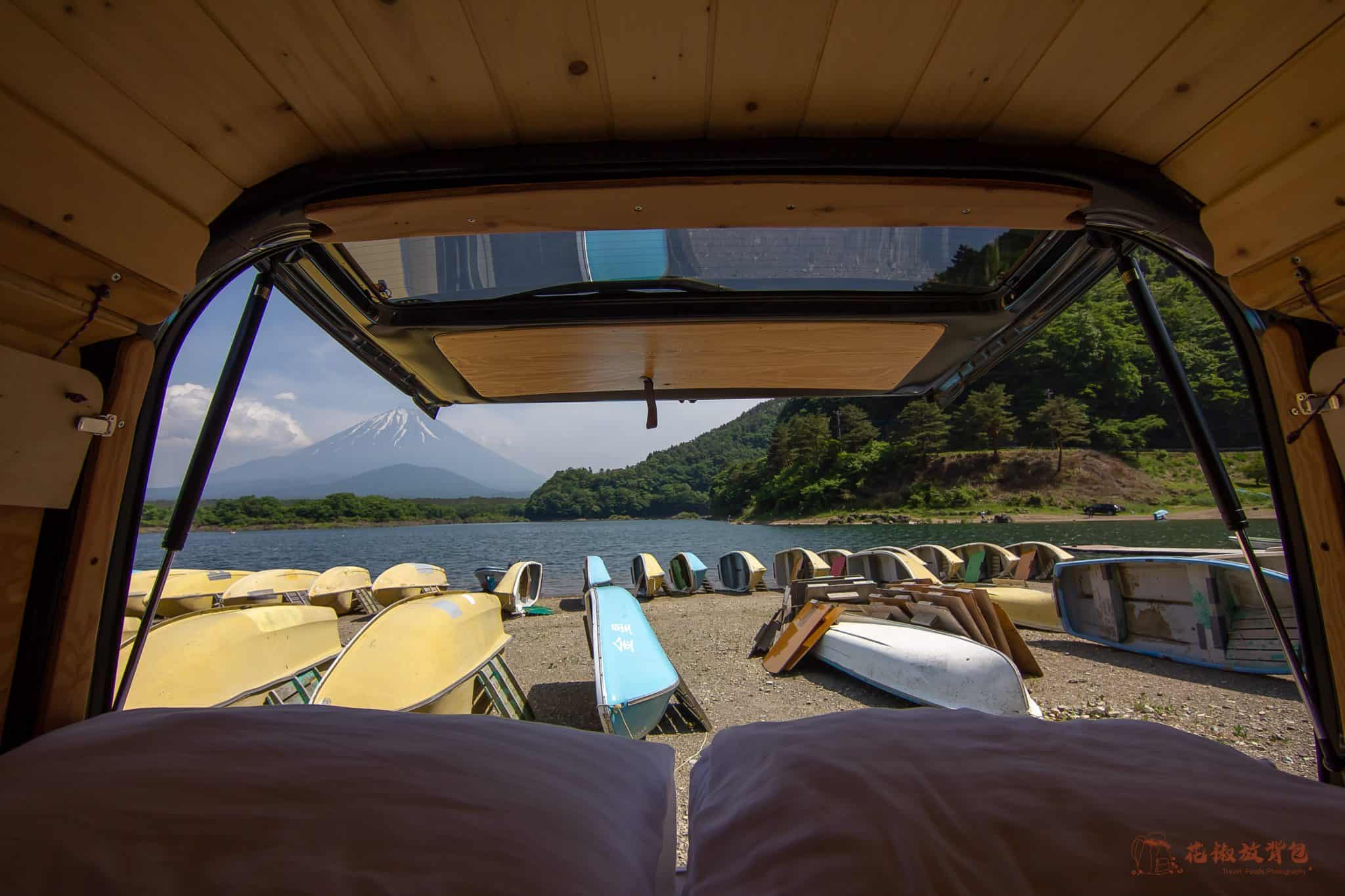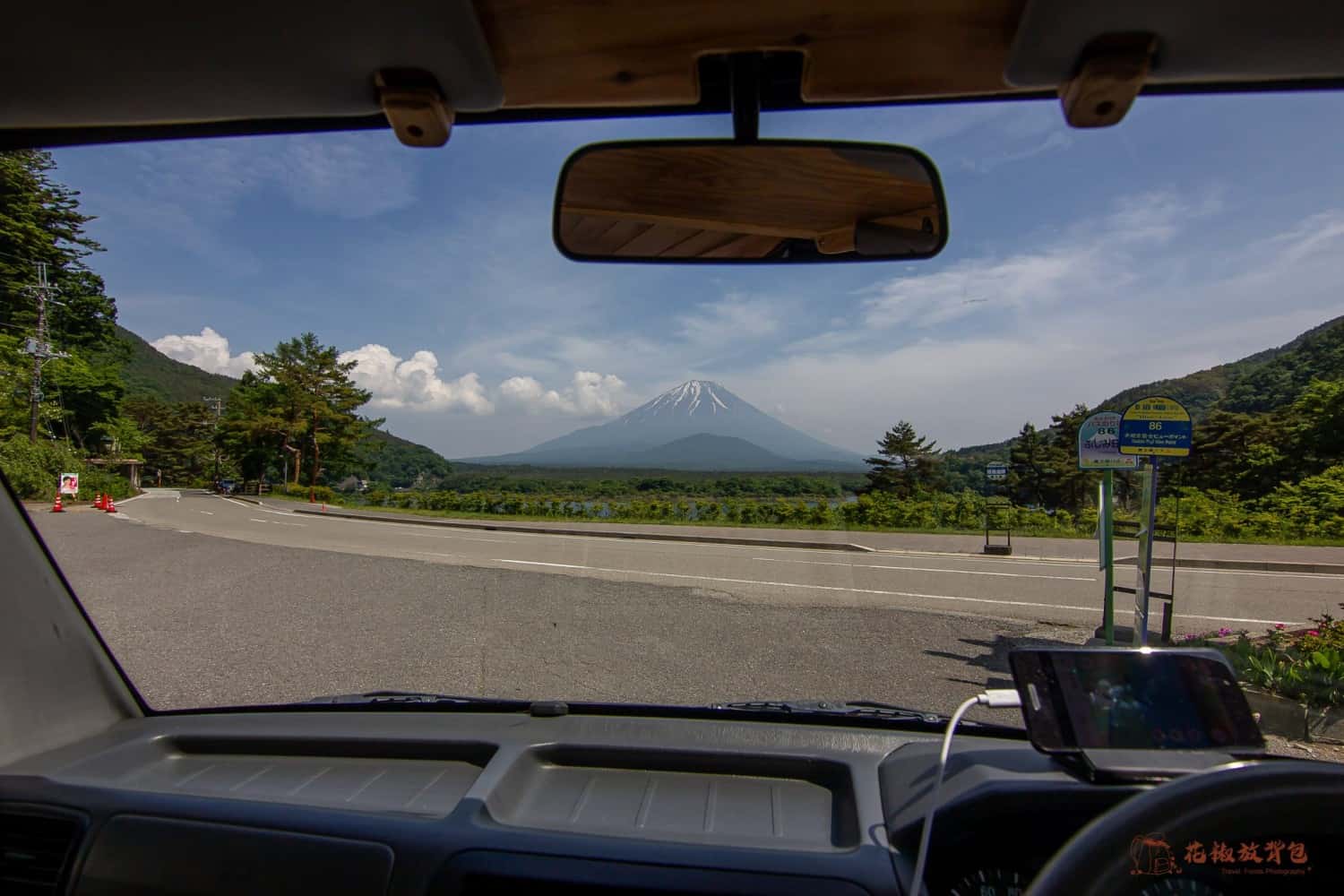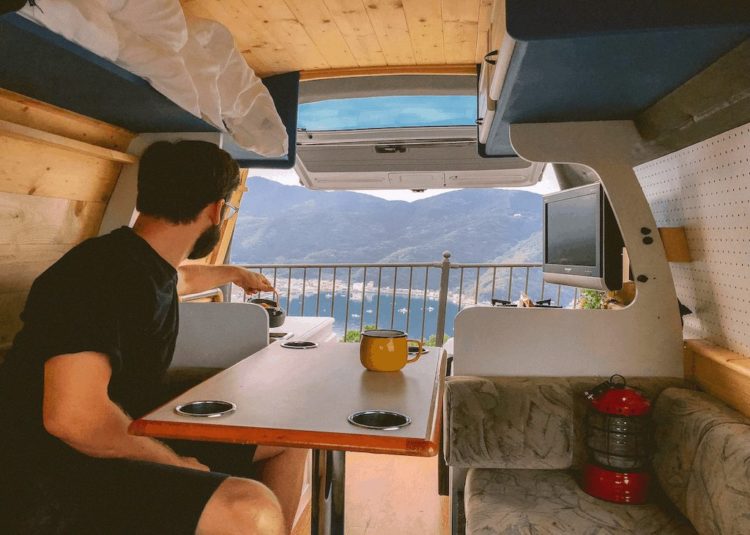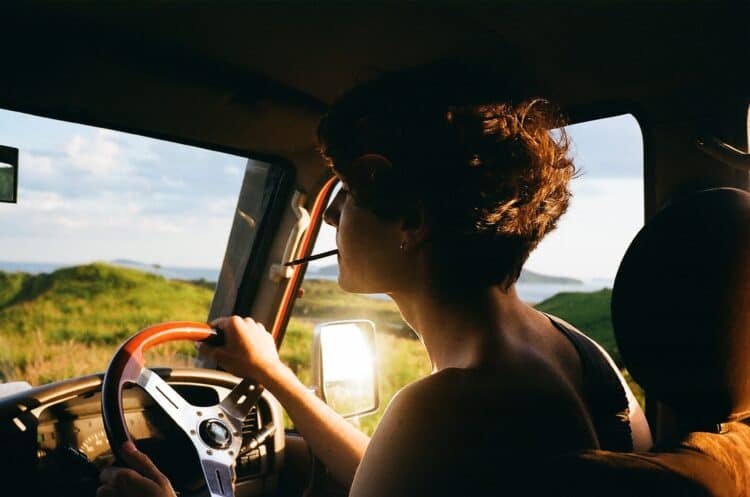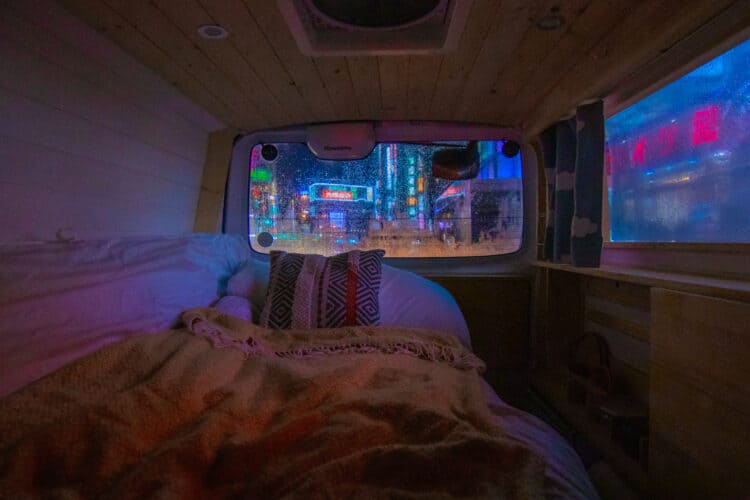A 3 day self-drive tour itinerary of Yamanashi and some of the Fuji Five Lakes.
Below you will find Mt Fuji viewing locations, places to park for the night, activities and things to see, as well as hot spring recommendations.
Day1
①Nishizawa Keikoku (Valley)
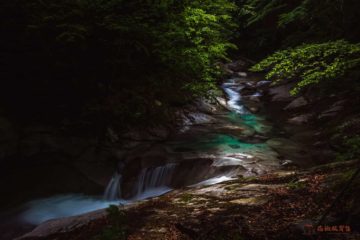
The Nishizawa Keikoku (西沢渓谷) near Kofu is a beautiful value found in Chichibu-Tama-Kai National Park,
A hiking trail leads up to Nishizawa Valley along a picturesque mountain and dark green clean streams of crystal clear water and several waterfalls.
The round trip hike from the parking lot is estimated to be about 3-4 hours, but if you are like me and want to stop to take photos and prefer to take your time then it’ll probably be closer to 4-5 hours to complete a full loop.
②Fuefukigawa Fruit Park
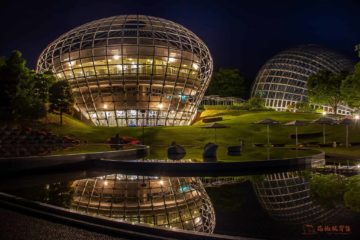
Fuefukigawa Fruit Park is great for families and located on the mountainside bordering Yamanashi City Station. From here, you can see a panoramic view of Yamanashi city as well as Mt. Fuji.
The parks gardens and grounds incorporate and grow eight unique fruits of (grapes, peaches, apples, pears, persimmons, gingko fruits, pomegranates and chestnuts). Entry to the park is free and there is plenty of green grass and space for families and kids to run around and explore. If you have children above the age of 3 there’s also a free outdoor water park and features. Inside the glass buildings you’ll find a tropical greenhouse, children’s indoor play place, as well as resting places including restaurants and refreshments. Just a few minutes drive further up the mountain is an outdoor onsen with an even better view of the Yamanashi city and Mt fuji.
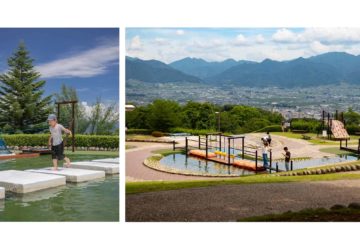
Hotarakashi Onsen is open from one hour before sunrise to 22:00 in the evening . There’s both indoor and outdoor hot springs. If you use the onsen in the morning, an attached restaurant sells a simple breakfast for ¥600 of rice, pickled side dishes, raw eggs, miso soup. Google Map>
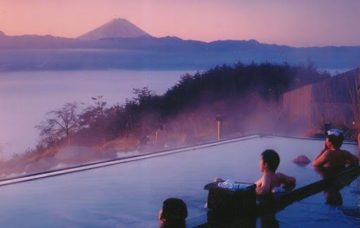
Parking for the night
To park and sleep for the night there are various campsites nearby, the closest being just just 20-30 second drive from Hotarakashi Onsen. https://hottarakashicamp.com (You’ll need to book and reserve a spot and they seem to be very booked on weekends, especially during the summer months)
If you want to park for free there’s a Michi-no-eki roughly 15 minutes drive away http://michinoeki-hanakage.fruits.jp/ (Address: 2120 室伏 牧丘町 Yamanashi, 404-0012)
We actually stayed in the Fuefukigawa Fruit Park Parking as there are very clean, public toilets. Please note we don’t recommend this however, as you may be asked to leave, but it is an option none-the-less. Google Map>
Down the mountain you can find a 7-11 convenience store Google Map>
One of the classic eats in Yamanashi Prefecture is a flat udon style noodle. The noodles are chewy, and gluttonous noodles served in a thick broth. The soup broth is is rich in ingredients, including pumpkin. We recommend you try the noodles at https://www.funari.jp/ Google Map> as it’s just a 5-minute drive away from The Fuefukigawa Fruit Park.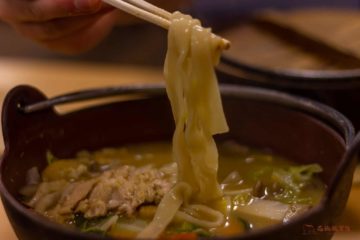
Day 2
Today’s main activities are concentrated in the area of Mount Fuji and the Five Lakes. There are a variety of places to walk and explore, but the distance between attractions is not far which makes it possible to experience a lot.
③Oishi Park

Oishi park is on the north shore of Kawaguchi Lake and provides a superb view of both the lake and Mt.Fuji . The park features a 350m walking path with a variety of flowers planted along it. There are shops near the parking lot, as well as a Kawaguchiko Natural Living Center where you can learn to make your own jam. The most popular souviner purchases seem to be blueberry jam or the blueberry soft ice cream.
④ Kawaguchi Asama Shrine
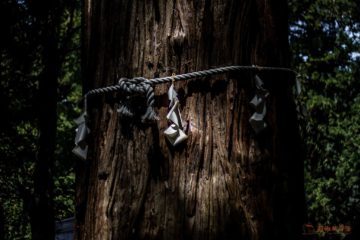
In 864, Mt. Fuji erupted, resulting in the following year a festival of fire, dedicated to the goddess of Mt. Fuji aiming to suppress further eruptions. Asama Shrines are a sub-set of Shinto shrines devoted to the god of volcanoes, there are seven huge trees, said to be over 1200 years old in the shrine, each with their own name and meanings. In 2013, a selection of Asama Shrines, including this one, were added to the UNESCO World Heritage Site listings for Mount Fuji.
⑤ Hahano Shirataki shrine
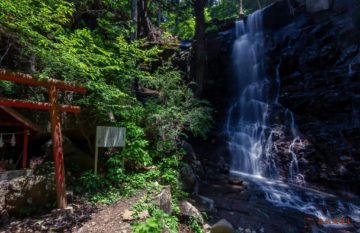
Mother Shiraaki Shrine – Hahano Shirataki meaning “Mother’s white waterfall” and is around a 30-40minute walk from Kawaguchi Asama Shrine. The most prominent feature being the Torii gate beside the waterfull. I recommend you get here by car, as trekking road on foot is not too interesting but the waterful and torii are worth to visit.
⑥ Saiko Iyashino-Sato Nenba

The Iyashi village, previously destroyed by a typhoon in 1966 was rebuilt and is now made up of more than twenty thatch roofed homes that have been converted into shops, restaurants, museums and galleries. The name, iyashi means “healing.” Walking through here gave me the sense of the wandering through an ancient time. If the weather is good you should be able to see Fuji in the distance, making this a popular spot for photographers.
⑦ Nakanokura Pass Observation Point

The Nakanokura Toge Mountain Pass Observatory is located on the northern side of Lake Motosuko. If the weather is clear, you’ll be able to see of Mount Fuji reflected on the surface of the lake. In fact, the 1,000 yen bill was designed based on this view. It takes around 30 minutes of trekking from the parking lot to Observatory. There are also various photos spots connect to the main road around the lake designated for parking and photos. Motosuko lake itself is a beautiful crystal clear lake, and refreshing for a summer swim. There are numerous campsites near or attached to the lake where you can pay to camp by tent or campervan.
⑧ Minobusan Kuonji
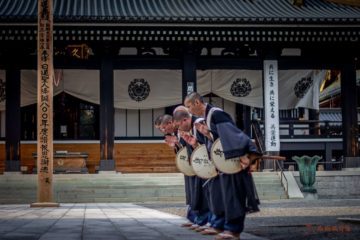
Minobusan Kuonji is home to the “Nichiren-shu” Buddhist religious sect and generally doesn’t seem to be a very well known location. It is a 30-40 minute drive from the west side of Lake Motosuko, and is most commonly visited by tourists during cherryblossom season looking to see the beautiful 400-year-old weeping cherry tree in front of the main temple. At first, I was hesitant to even travel here as I was enjoying the sights and nature around Motosuko, but the temple was definitely worth the journey.
Parking for the night
Finding parking places around the Fuji Five Lakes is quite easy. Each lake has more than one parking area making it easy to drive around the lake and find the most suitable location to stop for the night.
Oishi Park Parking lot
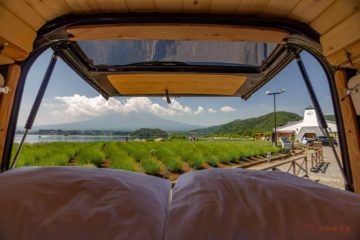
A amazing place you can sleep under the moon light and Mt.Fuji, and wake up in front flowers and a view of the lake. There are also clean toilets, convenience store, and shops nearby. The drawback for this location is that it’s close to the road so it’s not very quiet. Google Maps>
Shoji Lake canoe parking lot

Shoji Lake canoe parking lot is a nice place for staying a night as it boasts a beautiful Fuji view, wide parking spaces, as well as a public toliet. It’s also a good place for camping. Many local people come here for early morning fishing in or to take a canoe onto the lake and it’s generally quite quiet. The main drawback is that the nearest convenience store is roughly a 10 minute drive. Google Map>
Sai lakeside
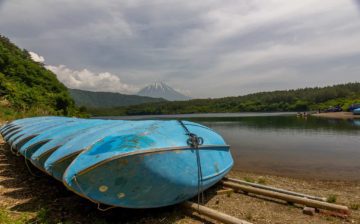
The Atmosphere is similar with Shoji Lake canoe parking lot, but smaller and more peaceful. Here you will also see a lot of fishermen during the day. Nearby there’s also a small walking trail, and public toilet. Google Map>
Lake Motosuko Parking
There are various parking spots all around Lake Motosuko, with clean toilets, but depending where you stop you will likley find it to be noisy due to being so near the main road. I suggest you stay in one of the man campsites surrounding the lake as they are away from the road and more quaint and quiet. With that said, if you choose to stay in the parking lot, there are walking trails nearby, clean toilets, great views, and event restaurants nearby. Google Map>
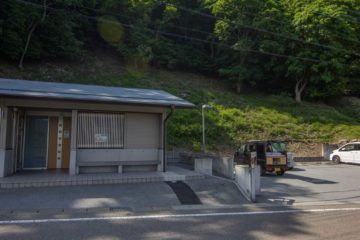
For bathing there is the Izumi hot spring hot spring. There are both indoor and outdoor pools. There is also a cafeteria, where you can dine after taking a bath. From my experience the portions were small but the food was tasty. Cost of entry was¥900 for adults and ¥500 for children.

Day 3
Slowly making our way back to Tokyo on day we stopped at these two infamous Yamanashi locations.
Other spots
⑨ Aokigahara forest

Aokighara forest is found around Mt.fuji, located at an altitude of about 900-1300m above sea level. You’ll find moss, vegetation, forest trees, and caves atop the lava flows from Mt Fuji. This forest has become known as suicide forest due to it being a place where people as it’s dense and easy to get lost if you’re not careful. Around this area there are numerous caves to explore including an “ice cave,” “wind cave,” “bat cave,” etc. We parked in the parking lot and walked into the forest for about 5 minutes to experience it first hand and take some photos.
⑩ Arakurayama Sengen Park
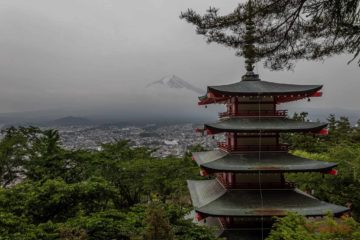
Arakurayama Sengen Park is located halfway up Mount Arakura in Yamanashi and home to Fuji Asama Shrine. This is a park provides a panoramic view of the city along with Mount Fuji in the background. This iconic location is popularly known a spot for cherry blossoms. We stopped here on our way back to Tokyo to explore and take some photos. Finally, make the journey back home to Tokyo.

